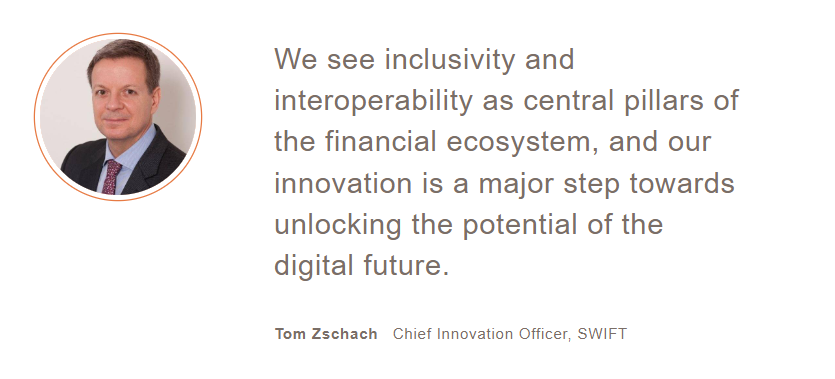Connecting digital islands: Paving the way for global use of CBDCs and tokenised assets
New technology continues to disrupt the financial landscape, but with multiple players building different solutions, on different technology platforms, it’s easy to imagine the digital financial ecosystem consisting of ‘digital islands’ – disjointed systems that can’t interact with one another.
But in our pioneering new experiments, we’ve shown how our existing infrastructure can be used to join up multiple distributed ledger technology platforms with each other, as well as with existing payment systems. The results mean that Central Bank Digital Currencies (CBDCs) and tokenised assets – digital tokens that represent ownership of all or part of a stock, bond, or even illiquid assets – could potentially be integrated into the financial ecosystem without causing disruption.
“Digital currencies and tokens have huge potential to shape the way we will all pay and invest in the future,” says Tom Zschach, Chief Innovation Officer at SWIFT.
“But that potential can only be realised if the different approaches that are being explored have the ability to connect and work together.”
“We see inclusivity and interoperability as central pillars of the financial ecosystem, and our innovation is a major step towards unlocking the potential of the digital future.”

Using CBDCs for cross-border payments
Nine out of ten central banks have been actively exploring digital currencies, but their focus has largely been on domestic usage. Interoperability is a central pillar to SWIFT’s strategy – and our experiments, carried out with Capgemini, have achieved successful transactions between different CBDC networks, as well as with fiat-to-CBDC flows between these networks and a real-time gross settlement system.
The experiments showed that different CBDC networks around the world can be interlinked not just with each other, but with existing payment systems, and all through a single gateway. SWIFT’s new transaction management capabilities could handle all inter-network communication.
To develop the solution further, 14 central and commercial banks – including the Banque de France, Deutsche Bundesbank, HSBC, Intesa Sanpaolo, NatWest, SMBC, Standard Chartered, UBS and Wells Fargo – are now collaborating in a testing environment to accelerate its path to full scale deployment.
“For CBDCs,” says Zschach, “our solution will enable central banks to connect their own networks simply and directly to all the other payments systems in the world through a single gateway, ensuring the instant and smooth flow of cross-border payments.”
Unlocking the potential of tokenised assets
In a separate set of experiments, we’ve collaborated with Citi, Clearstream, Northern Trust and SETL, to assess how our existing infrastructure can be used as a single access point to multiple tokenisation platforms.
Tokenisation is a relatively nascent market, but the World Economic Forum has estimated it could reach USD 24 trillion by 2027. The potential benefits include greater market liquidity and fractionalisation, which could increase access to investment markets for retail investors and enable institutional investors to build stronger portfolios.
Our experiments successfully carried out 70 scenarios, simulating market issuance and secondary market transfers of tokenised bonds, equities and cash. The results show that SWIFT can be used as a single point of entry to various tokenised networks, and our infrastructure can be used for creating, transferring and redeeming tokens and updating balances between multiple client wallets.
“Tokenisation has great potential when it comes to strengthening liquidity in markets and increasing access to investment opportunities,” says Zschach. “And SWIFT’s existing infrastructure can ensure these benefits can be realised at the earliest opportunity, by as many people as possible.”
Instant, frictionless, interoperable
These experiments are part of our extensive innovation to support our strategic focus on enabling instant, frictionless and interoperable cross-border transactions for the benefit of the SWIFT community, which consists of more than 11,500 financial institutions and 4 billion accounts across 200 countries and territories.
We’re transforming the underlying infrastructure of the global economy to meet the rapidly changing needs of businesses and consumers. This includes delivering a new standard for cross-border low-value payments, SWIFT Go, and services like Payment Pre-validation, which uses predictive intelligence to pre-check international payments for data inaccuracies before the payment has even been initiated.


















































First, please LoginComment After ~